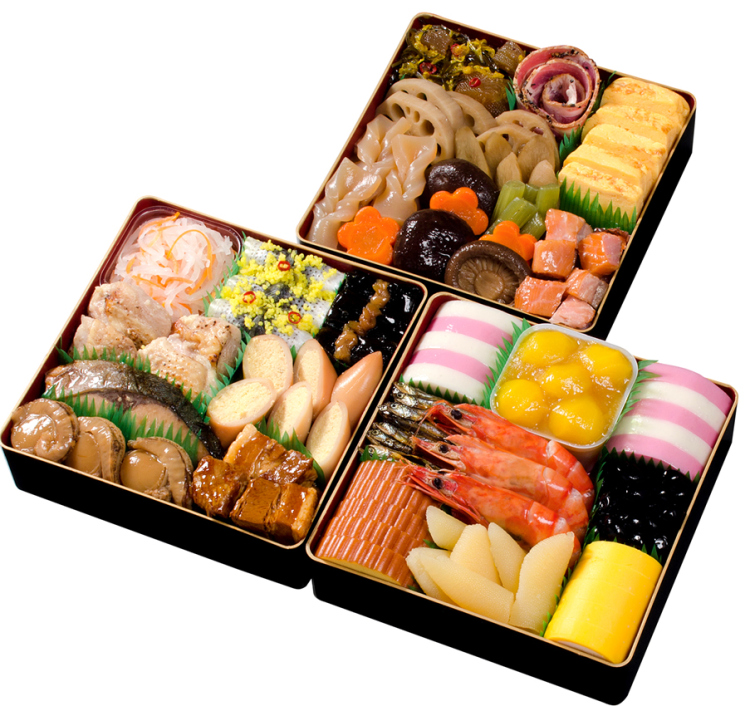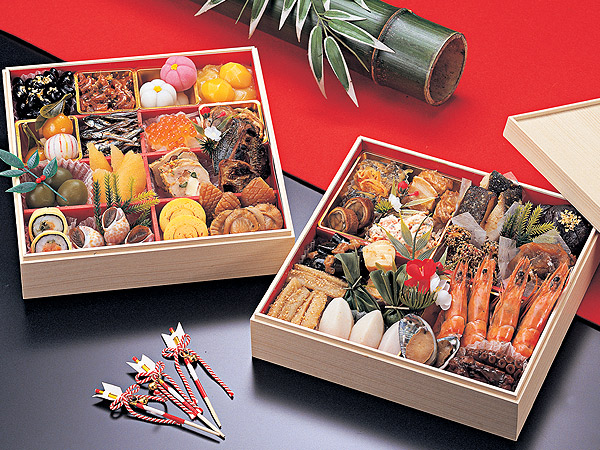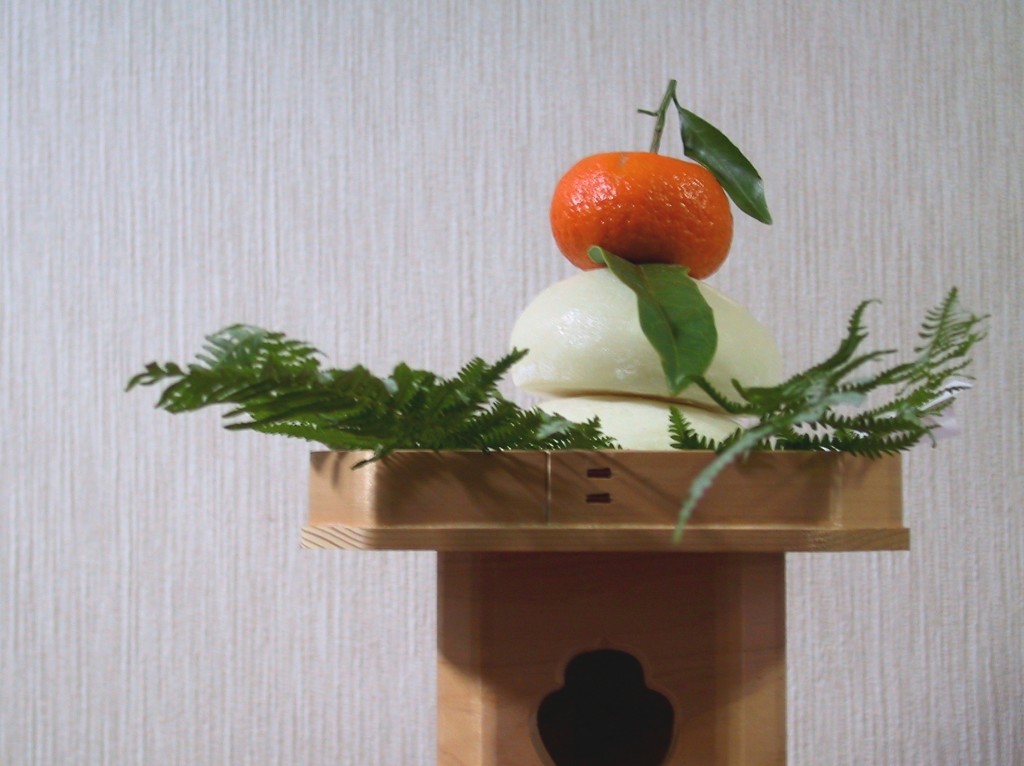
Black beans, prawns, sweet chestnut, herring roe, rolled kelp and other goodies
Recently Green Shinto carried a post about the significance of New Year decorations. Now it’s the turn of the special New Year food known as osechi ryori. An article yesterday in The Japan Times considered the food’s symbolism, which derives from its association with the toshigami, or kami of the changing year.
**************************************************************************************************************************
Impress your hosts with osechi meanings BY MINORU MATSUTANI, STAFF WRITER, Japan Times
JAN 5, 2014
Shōgatsu is the time when most Japanese carry out certain religious rituals, though many of them may not realize what they do has religious significance.
The ancient Japanese believed that toshigami-sama (the year god) visited them in the shōgatsu period and pretty much every ritual they did in shōgatsu, such as nenmatsu no ōsōji (yearend cleanup) and making osechi ryōri (お節料理, a special variety of foods eaten during the New Year period), was about welcoming toshigami to their houses to bring them happiness.
The cleanup and making osechi food prior to Dec. 31 also have a practical reason that housewives do not want to work during New Year when every family member is at home on holiday.
From midnight of Dec. 31, people line up at their local shrines for hatsu-mōde (the first visit to shrine of a year) to pray to ujigami-sama (local deity) for health, success and happiness for the year. Hatsu-mōde is usually done during the first three days, but some do it on Jan. 4 or after to avoid crowds.

Mouth-watering New Year fare
Before the train system was developed, people simply visited their ujigamisama, but nowadays many of them go to large famous shrines and temples. The most famous is Meiji-Jingū, which attracts millions of visitors every year.
At home, family members get together to eat osechi ryōri (often shortened to osechi), on New Year’s day and the following days. Foods in osechi are cooked in such a way that they can last many days, and many of the foods have meanings. For example, kuromame (black beans) means you will mame-ni hataraku (work hard). Yes, being able to work hard is a good thing in Japan. It also connotes being healthy enough to work hard.
People eat kazunoko (herring roe) to be blessed with many children, and kurikinton (sweet chestnuts stewed with sugar) are a bright yellow gold, connoting wealth.
Buri (adult yellowtail fish) is considered lucky for promotion at work because it is a fish that is called different names as they grow. While tai (red seabream) is lucky because it rhymes with medetai (congratulatory). Tai is also eaten in other “medetai” occasions such as weddings.
Kobumaki (rolled kelp with fish in it) rhymes with yorokobu (be happy). Renkon (lotus root) will enable you to look through to the future because it has holes in it. Ebi ( shrimp) signify old people because they have moustaches and are hunchbacked, so eating them is believed to impart a long life. Ise ebi (Japanese spiny lobster) may give you a luxurious beginning to the year, but kuruma ebi (tiger shrimp) suffice for regular households.

Kagami mochi, seat for the toshigami deity, with daidai bitter orange and urajiro leaves
Putting kagami mochi (a stack of two pieces of round rice cake) in various places of the house is also meant to welcome toshigami. It is so named as it looks like a round copper kagami (mirror) that was used in ancient Japan. The round shape is said to represent the heart, and kagami mochi is said to offer accommodation to toshigami when it visits a house. They can be placed anywhere you want toshigami to come, such as the living room, inside a car and even in the toilet.
Kagami mochi are often topped with daidai (Japanese bitter orange), which is lucky because the name sounds the same as ‘many generations’ and connotes something will last a long time. The phrase senzo daidai tsutawaru (passed on for many generations) is used in describing rare treasures or highly respected craftsmanship.
Otoshidama (money given to children at New Year) is a ritual derived from kagami mochi. Parents and adult relatives give children otoshidama, usually several thousand yen. The origin of otoshidama is a Shinto event in which priests gave kagami mochi to shrine visitors.

Leave a Reply